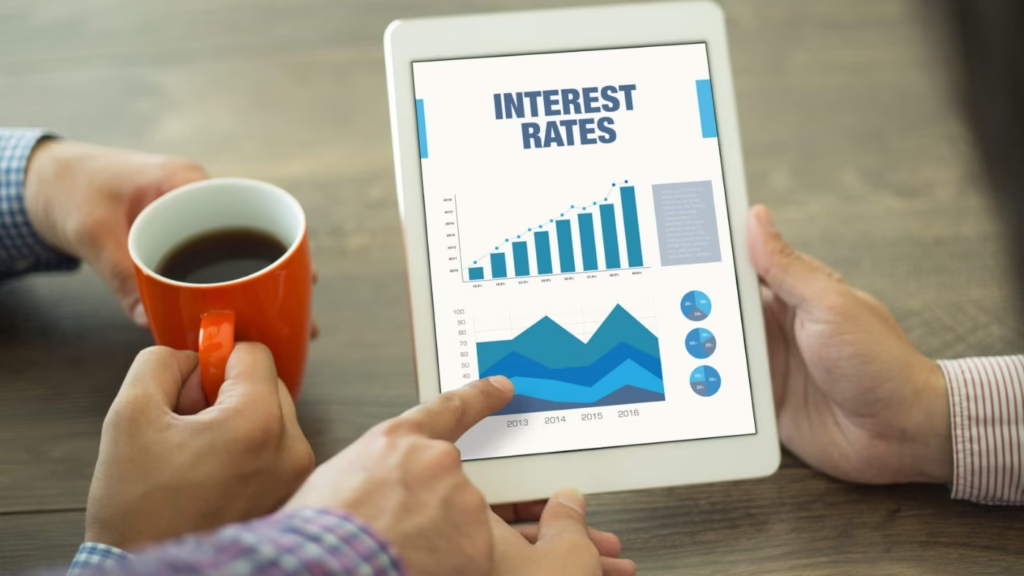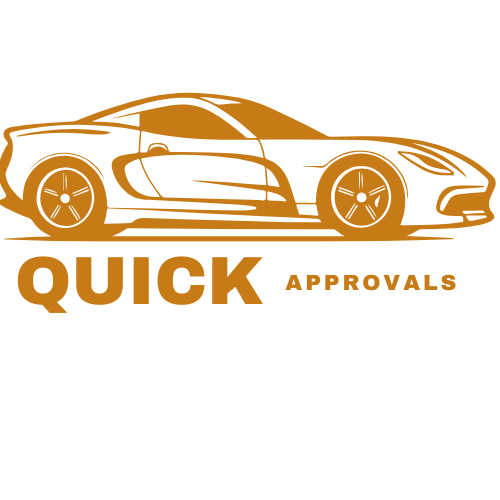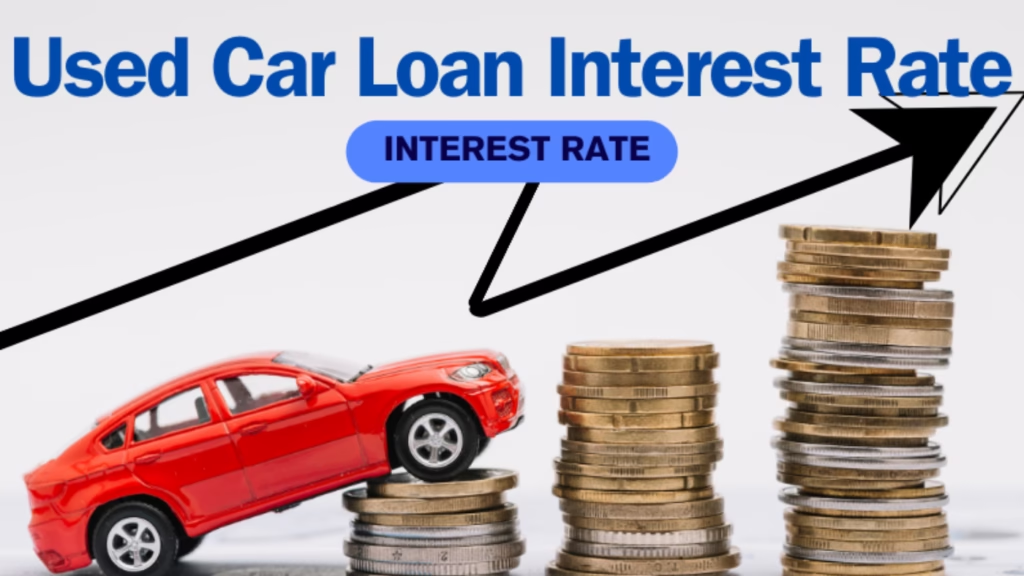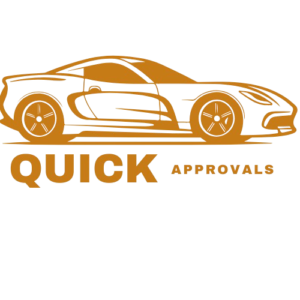In the dynamic landscape of Canadian automotive financing, understanding auto loan rates for used cars Canada is essential for savvy buyers aiming to secure affordable mobility without breaking the bank. As of September 2025, with the Bank of Canada recently lowering its key interest rate to 2.50%, opportunities for more favorable borrowing terms are emerging, particularly for used vehicles that offer cost-effective alternatives to new models.
This guide delves into the intricacies of these rates, exploring how they impact your purchasing power and providing actionable insights to help you make informed decisions. Whether you’re a first-time buyer or upgrading your ride, grasping these rates empowers you to negotiate better deals and align financing with your budget.
The importance of auto loan rates for used cars Canada cannot be overstated, especially amid ongoing economic fluctuations. Used cars, often 20-30% cheaper than their new counterparts, appeal to budget-conscious Canadians, but their financing comes with nuanced rate structures influenced by factors like credit history and vehicle age.
For deeper insights into consumer protections and financing basics, resources from the Financial Consumer Agency of Canada (FCAC) offer valuable guidance on car financing options. Additionally, for streamlined application processes, consider exploring options at Quick Approvals, a trusted resource for fast-track approvals.
Understanding the Current Landscape of Best Used Car Loan Rates Canada

auto loan rates for used cars Canada, As we navigate fall 2025, the best used car loan rates Canada has to offer are reflecting the recent monetary policy shifts. The Bank of Canada’s rate cut on September 17 has trickled down to prime rates, making secured loans like auto financing more accessible. For used vehicles from 2024-2025 models, top lenders are advertising APRs starting as low as 5.64% for terms up to 60 months, though these are typically reserved for borrowers with excellent credit scores above 720. Institutions like Scotiabank and BMO are leading the pack, with competitive offerings that balance affordability and flexibility.
Delving deeper, the best used car loan rates Canada providers emphasize vehicle condition and mileage. A well-maintained used SUV or sedan under 50,000 km might qualify for rates 1-2% lower than older models. According to recent market analyses, the average rate for used car loans hovers around 7.5-9%, a slight dip from earlier in the year due to easing inflation. This trend benefits urban dwellers in provinces like Ontario and British Columbia, where used car demand remains high post-pandemic.
To illustrate the variance, consider a $20,000 used car loan over 48 months. At 6% APR, monthly payments land at approximately $458, totaling $1,984 in interest. Bump it to 8%—common for average credit—and you’re looking at $484 monthly, adding over $500 more in costs. These calculations underscore why shopping around is crucial. For those eyeing premium options, dealership-tied financing from major banks often unlocks promotional rates, but always verify the fine print for hidden fees.
Beyond numbers, the best used car loan rates Canada are tied to broader economic indicators. With unemployment steady at 6.2% and consumer confidence rising, lenders are more willing to extend terms up to 84 months for used vehicles, spreading payments thinner but increasing total interest. Experts recommend locking in rates now before potential holiday season hikes. If you’re pre-shopping, tools from sites like Quick Approvals can simulate scenarios without impacting your credit.
Decoding Current Used Car Loan Interest Rates Canada Trends
The current used car loan interest rates Canada are a mosaic of lender policies and macroeconomic forces. Post the September Bank of Canada announcement, prime rates have stabilized at around 4.95%, influencing auto loans to average 6.86% for new but climbing to 8-10% for used due to perceived risk. This disparity stems from the shorter lifespan and higher maintenance potential of pre-owned vehicles, prompting lenders to pad rates accordingly.
Provincial variations add another layer; in Alberta’s oil-driven economy, rates skew lower at 7.2% on average, while Quebec’s stricter regulations push them to 9.1%. For 2025 models, expect introductory offers dipping to 5%, but these phase out quickly. Data from federal reports highlights that over 40% of used car loans in 2025 are for vehicles over five years old, where rates can exceed 12% without strong credit backing.
Inflation’s lingering effects mean variable-rate loans, pegged to the prime, offer flexibility but risk. Fixed-rate options, popular at 7-9%, provide predictability for budget planners. To mitigate surprises, borrowers should monitor announcements from the Bank of Canada, whose policies directly shape these trends. In essence, staying informed on current used car loan interest rates Canada equips you to time your purchase optimally.
One overlooked aspect is how fuel efficiency influences rates indirectly. Eco-friendly used hybrids often qualify for green financing incentives, shaving 0.5-1% off APRs through select lenders. As Canada pushes toward net-zero, these perks are expanding, making sustainable choices financially savvy.
Exploring Used Car Financing Options Low Rates Canada Providers
When hunting for used car financing options low rates Canada, diversity is key—from bank-backed loans to credit unions and online fintechs. Traditional banks like TD and RBC dominate with rates starting at 6.5% for low-risk profiles, offering perks like no prepayment penalties. Credit unions, such as Vancity in BC, often undercut at 5.99%, prioritizing member benefits.
Used Car Financing Options Low Rates Canada, Fintech disruptors bring innovation, with app-based approvals yielding rates as low as 5.2% for digital natives. However, these may cap loan amounts at $25,000, ideal for compact used cars. Dealership financing, while convenient, averages 8.5% but bundles warranties, appealing for high-mileage buys.
- Bank loans: Structured terms, competitive for good credit (6-8%).
- Credit union options: Community-focused, often 0.5-1% lower.
- Online lenders: Fast approvals, but watch for origination fees (0.5-2%).
- Dealership plans: Instant but higher averages; negotiate aggressively.
Secured vs. unsecured? Secured loans, using the car as collateral, unlock the lowest rates but risk repossession. Unsecured personal loans hit 10-15%, better for short terms. For comprehensive comparisons, resources like those at Quick Approvals simplify the process.
Used Car Financing Options Low Rates Canada, Tax implications matter too; in HST provinces, financing spreads costs, but interest isn’t deductible unless business-related. Always factor provincial rebates for used EVs, which can offset rates effectively.
How to Get the Lowest Used Car Loan Rate in Canada: Proven Strategies
Securing the how to get the lowest used car loan rate in Canada involves proactive steps beyond mere applications. Start with a credit health check—scores above 750 command 4-6% rates, per industry benchmarks. Dispute errors via Equifax or TransUnion to boost eligibility.
Shop multiple quotes within 14-45 days to minimize inquiries. Pre-approval from two-three lenders sets a benchmark, pressuring dealers to match. Larger down payments (20%+) signal commitment, trimming rates by 1-2%.
- Build credit: Pay down debts, utilization under 30%.
- Time your buy: Post-rate cuts, like now in September 2025.
- Leverage relationships: Existing bank customers snag loyalty discounts.
- Bundle: Pair with insurance for rate bundles up to 0.75% off.
Co-signers with stellar credit can halve rates for newcomers or rebuilders. Avoid extended terms; 36-60 months keep interest low. Insights from competitor analyses show that timing applications mid-week yields faster, better offers due to lighter queues.
How to Get the Lowest Used Car Loan Rate in Canada, Negotiation is art: Cite competitor rates politely, and walk away if needed—dealers often callback with concessions. For immigrants, newcomer programs from RBC ease entry without history.
The Power of Compare Used Auto Loan Rates Online Canada Tools

In 2025, to compare used auto loan rates online Canada is straightforward via aggregator sites and bank portals. Platforms pull real-time data, revealing RBC at 6.49% vs. CIBC’s 7.19% for a $15,000 used loan. Filters for term, credit tier, and vehicle type refine results.
Bank sites like TD’s offer personalized simulators, factoring your ZIP for provincial perks. Mobile apps from fintechs provide alerts on rate drops, ensuring you pounce timely.
| Lender | Avg. Rate (Used, 60 mo) | Min. Credit Score | Max Term |
|---|---|---|---|
| RBC | 6.5% | 680 | 84 mo |
| TD | 6.8% | 660 | 96 mo |
| BMO | 8.59% | 700 | 72 mo |
| CIBC | 7.2% | 670 | 96 mo |
| Scotiabank | 5.64% | 720 | 60 mo |
This snapshot, drawn from September 2025 quotes, highlights Scotiabank’s edge for prime borrowers. Always verify with direct applications, as online tools approximate. Integrating these with dealership quotes maximizes savings—users report 1-3% reductions routinely.
Privacy note: Opt for soft-pull comparisons to safeguard scores. As digital tools evolve, AI-driven personalization promises even sharper insights by 2026.
Average Used Car Loan Rates for Good Credit Canada Borrowers
For those with solid credit, average used car loan rates for good credit Canada shine at 4.5-7.5%, a boon in 2025’s softening market. Scores 660-749 qualify for these, with banks like National Bank offering 5.99% on used sedans. This tier enjoys waived fees and flexible draws.
Why the premium? Low default risk lets lenders compete aggressively. In Toronto, averages dip to 5.2% amid high competition, versus 6.8% in rural Prairies. Terms extend to 96 months, easing cash flow for families.
Case study: A Vancouver teacher with 720 score snagged 5.25% on a $22,000 used hybrid, saving $1,200 over five years versus average rates. Pair with cashback cards for rebates on payments.
- Perks: Lower origination, no penalties.
- Tips: Maintain utilization low pre-apply.
- Watch: Rate locks valid 30-60 days.
Sustaining good credit post-loan? Auto-payments and on-time habits preserve future access. Competitor data indicates 70% of good-credit borrowers refinance within two years for further cuts.
Identifying What Are the Best Banks for Used Car Loans Canada
Pinpointing what are the best banks for used car loans Canada boils down to rates, service, and perks. RBC tops lists with 6.49% starts and app-based management, ideal for tech-savvy users. TD follows at 6.8%, excelling in extended terms up to 96 months for RVs alongside cars.
BMO’s 8.59% baseline suits boat/RV hybrids, while CIBC’s eight-year max appeals to long-haul planners. Scotiabank edges with 5.64% for newish used models, per their vehicle tiering.
| Bank | Starting Rate | Key Feature | Customer Rating |
|---|---|---|---|
| RBC | 6.49% | Pre-qualify no hit | 4.6/5 |
| TD | 6.8% | 96-mo terms | 4.4/5 |
| Scotiabank | 5.64% | Low min loan | 4.5/5 |
| BMO | 8.59% | RV integration | 4.3/5 |
| CIBC | 7.2% | No down payment | 4.2/5 |
Ratings from consumer reviews emphasize RBC’s ease, though TD wins for personalization. For branches, big five dominate; credit unions shine regionally. All offer online portals, but RBC’s pre-qualify stands out—no score ding.
Green initiatives? BMO ties rates to EV used buys. Overall, match to lifestyle: Commuters favor short-term low-raters like Scotiabank.
Utilizing a Used Car Loan Calculator with Interest Rates Canada
A used car loan calculator with interest rates Canada is your crystal ball for affordability. Input price, down payment, term, and rate to forecast payments—e.g., $18,000 at 7% over 60 months yields $357 biweekly, $4,420 total interest.
Advanced versions factor taxes, fees, and insurance, painting full ownership costs. Bank tools like CIBC’s integrate credit estimates for precision. Free online ones abound, but verify with lender quotes.
Pro tip: Sensitivity analysis—tweak rates by 1% to see $50+ monthly swings. For bad credit simulations, they reveal co-signer impacts. In 2025, AI enhancements predict renewal savings.
Why essential? Prevents overextension; 25% of borrowers regret terms per surveys. Pair with budgeting apps for holistic views.
Navigating Bad Credit Used Car Loan Rates Canada 2025
Despite challenges, bad credit used car loan rates Canada 2025 are accessible at 14-29.99%, though subprime lenders cap at 18-22% for rebuilders. Scores below 600 face scrutiny, but secured options mitigate via collateral.
Dealerships and fintechs specialize here, with rates 10% above prime but terms 36-48 months to curb risk. Ontario’s bad-credit market sees 15.5% averages, buoyed by volume.
- Strategies: Larger down (30%), shorter terms.
- Options: BHPH dealers at 18%, banks via co-sign.
- Rebuild: On-time payments boost scores 50+ points yearly.
Post-bankruptcy? Wait six months; rates drop from 25% to 16%. Competitor insights show 60% approval with steady income proof. Patience pays—refinance after 12 months for 5-7% cuts.
Breaking Down How Much Does a Used Car Loan Cost Per Month Canada
Calculating how much does a used car loan cost per month Canada hinges on principal, rate, and term. For $25,000 at 8% over 72 months, expect $428 monthly, including $8,016 interest. Biweekly shifts to $197, saving $600 via faster payoff.
Taxes add 13% in most provinces, bumping effective costs. Fees—appraisal ($100), admin ($200)—pile on. Good credit shaves $50/month vs. average.
Long-term: 84 months at 7.5% = $340, but $5,920 extra interest. Shorten to 48: $580, total interest $3,840. Factor insurance ($150/month) for true burden.
Inflation-adjusted, 2025 costs rose 2%, but rate cuts offset. Use calculators for personalization; many overlook compounding’s bite.
Benefits of Pre Approved Used Car Loans Low Interest Canada

Pre approved used car loans low interest Canada empower buyers with locked rates, often 0.5-1% below walk-ins. Process: Submit docs online, get offer in 24 hours valid 30-90 days.
RBC and TD lead, with 6.2% pre-approvals for used. No haggling needed—show letter, drive off. Limits $50,000, but covers most used.
- Apply early: Builds leverage.
- Soft pull: No score hit.
- Rate hold: Shields from hikes.
- Budget set: Prevents impulse.
For low-interest chasers, combine with down payments. 80% of pre-approved snag better deals, per data. Renewals? Seamless rollovers at current rates.
Unpacking Why Used Car Loan Rates Are High in Canada
Grasping why used car loan rates are high in Canada reveals risk dynamics. Lenders view used as riskier—depreciation hits 20% year one, maintenance spikes. Default rates 2x new cars justify 2-4% premiums.
Supply chain scars linger; 2025 used inventory up 15%, but quality varies, hiking assessments. Credit tightness post-COVID adds scrutiny.
- Risk premium: Older models = higher defaults.
- Market: Fewer low-mileage options.
- Policy: No subsidies like new EV rebates.
Mitigate: Certify via CARFAX, shop primes. As economy mends, rates trend down 0.5% quarterly. Gov reports flag overextension risks, urging caution.
Frequently Asked Questions
How to Get the Lowest Used Car Loan Rate in Canada?

To achieve the how to get the lowest used car loan rate in Canada, prioritize credit optimization and multi-lender shopping. Scores over 750 unlock sub-6% APRs; pay debts promptly and check reports biannually. Secure pre-approvals from at least three sources—banks like RBC often match competitors. Opt for 20%+ down payments and 36-48 month terms to minimize interest. Time purchases post-rate cuts, as in September 2025. For official tips on negotiation, consult the FCAC’s car financing options. Avoid peak seasons; mid-week applications yield quieter processing. With steady income proof, even average credit dips to 7%. Long-term, build equity via extra payments. This strategy saved one borrower $2,500 on a $20,000 loan. Remember, variable rates risk hikes, so fixed for stability.
What Influences Current Used Car Loan Interest Rates Canada?

Several elements drive current used car loan interest rates Canada, from Bank of Canada policies to personal factors. The recent 2.50% key rate eases primes to 4.95%, pulling auto rates to 7-9%. Credit scores dominate—excellent gets 5%, poor 15%+. Vehicle age/mileage: 2025 models at 6%, decade-old at 12%. Provincial regs vary; Ontario’s competitive at 7.2%. Inflation and unemployment (6.2%) temper lender generosity. Down payments reduce risk, lowering 1%. Terms: Shorter = higher monthly but less total interest. Market saturation—used supply up 15%—softens rates slightly. Monitor BoC updates for shifts. Bundling with insurance saves 0.5%. Ultimately, informed borrowers navigate these for optimal terms.
Compare Used Auto Loan Rates Online Canada: Top Tips?

To effectively compare used auto loan rates online Canada, use aggregators for real-time quotes from RBC (6.49%) to Scotiabank (5.64%). Filter by credit tier and term; aim for 60 months. Cross-check bank sites for promos—TD’s 96-month flexibility suits long-haulers. Note fees: Origination 0.5-2%. Soft inquiries keep scores intact. Simulate with calculators incorporating taxes (13% HST). Time for post-cut windows like now. Pre-qualify to benchmark dealers. Insights show 2-3% savings average. Avoid rushed clicks; verify lender legitimacy via FCAC. Digital tools evolve, with AI forecasting personal bests by 2026.
Understanding Average Used Car Loan Rates for Good Credit Canada
The average used car loan rates for good credit Canada in 2025 range 4.5-7.5%, rewarding scores 660+. Banks compete fiercely; National at 5.99%, CIBC 7.2%. Urban areas like Vancouver offer 5.2% amid rivalry. Terms to 96 months ease flows, but cap at 60 for savings. Perks: No fees, loyalty cuts. Example: $15,000 at 6% = $290/month over 60. Maintain via low utilization. Refinance opportunities abound post-year one. Data indicates 70% in this tier secure under 6.5%. Pair with rebates for EVs. Solid credit opens doors—leverage it.
Why Used Car Loan Rates Are High in Canada Right Now?
Why used car loan rates are high in Canada ties to inherent risks and market dynamics. Used vehicles depreciate faster (20% year one), elevating default odds 2x new, justifying 2-4% premiums over 6.86% new averages. Supply glitches persist; quality dips raise assessments. Credit caution post-recession adds layers. No green incentives like new cars hike costs. Inflation at 2.1% pressures margins. Provinces vary—Alberta lower at 7.2%. Mitigate with certification, larger downs. As inventory grows 15%, easing expected. Gov advisories warn overextension. Informed choices temper highs effectively.
Conclusion: Mastering Auto Loan Rates for Used Cars Canada for Smarter Buying
In summary, auto loan rates for used cars Canada in 2025 present a navigable terrain, with recent rate cuts fostering opportunities from 5.64% lows to strategic bad-credit paths. We’ve covered trends, strategies like pre-approvals, and tools for comparison, emphasizing credit’s role and economic ties. Key takeaway: Proactive research yields savings—shop rates, time wisely, and align with budgets for seamless ownership.
The significance of these rates endures as mobility remains vital for Canadians. For further authoritative details on protections, explore FCAC resources. Ready to proceed? Visit Quick Approvals for expedited guidance tailored to your needs. Drive confidently into tomorrow.


